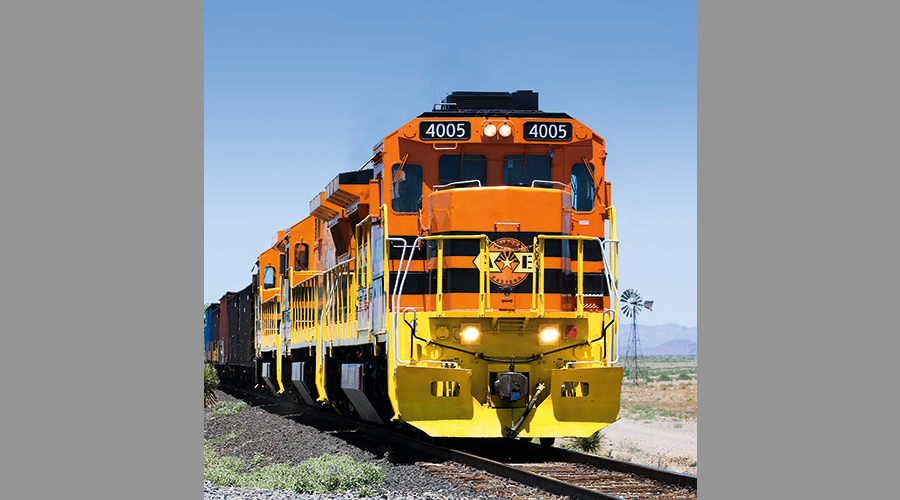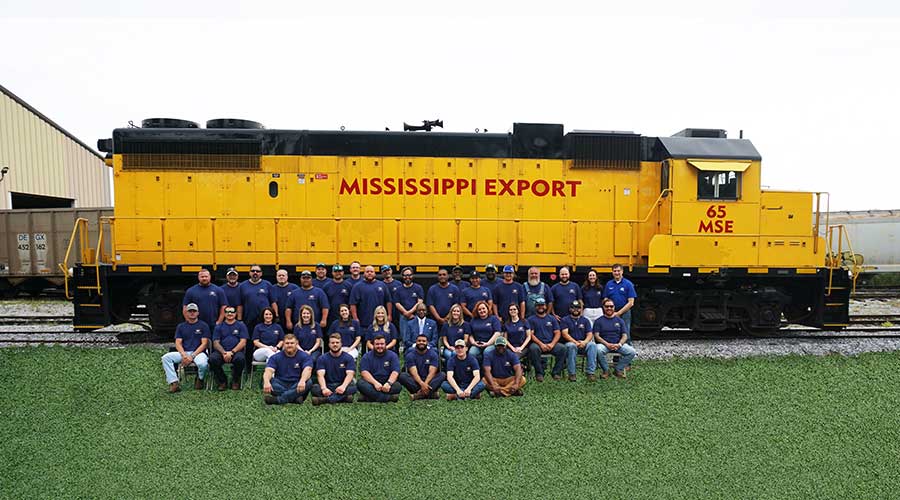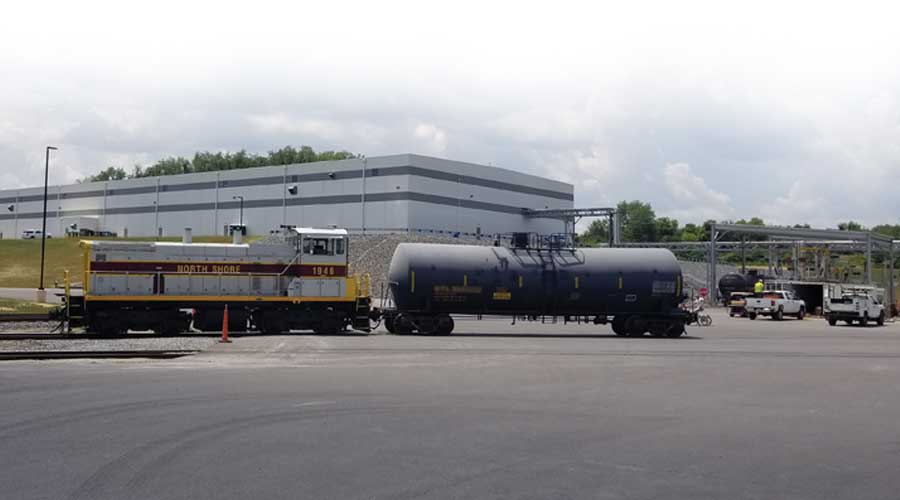Stay updated on news, articles and information for the rail industry
January 2014
Rail News: Short Lines & Regionals
Genesee & Wyoming swings deal to acquire major Canadian Pacific line, create large U.S. regional railroad
By Jeff Stagl, Managing Editor
If the Surface Transportation Board (STB) approves a major line purchase transaction with Canadian Pacific, Genesee & Wyoming Inc. (GWI) will begin operating its largest U.S. railroad sometime later this year.
On Jan. 2, CP and GWI announced they executed an agreement through which the Class I will sell the west end of its Dakota, Minnesota & Eastern Railroad (DM&E) line to GWI for $210 million. The west end encompasses about 660 miles of track between Tracy, Minn., and Rapid City, S.D.; Rapid City and Colony, Wyo.; and Rapid City and Dakota Junction, Neb. The route also includes branch lines and other trackage between Dakota Junction and Crawford, Neb., that's leased to the Nebraska Northwestern Railroad.
The sale is expected to close by mid-2014, subject to STB approval and other customary closing conditions. GWI then would form the Rapid City, Pierre & Eastern Railroad (RCP&E) to operate the line. The new railroad would interchange with CP, BNSF Railway Co., Union Pacific Railroad and the Nebraska Northwestern.
RCP&E would become one of the larger regional railroads in North America, said GWI Senior Vice President of Corporate Development Matt Walsh in an email. The new railroad immediately would be accretive to GWI’s earnings and expand the company’s rail operations footprint into new geography by adding South Dakota and Nebraska, he said.
“Through its subsidiaries, GWI would own or provide rail services in 41 states and four Canadian provinces,” said Walsh, adding that the company — which owns 108 regionals and short lines in North America — already operates a railroad in Minnesota and provides rail switching services in Wyoming.
RCP&E also would help diversify GWI’s commodity mix. There is significant bentonite and ethanol traffic on the line, and agricultural products — primarily grain — will continue to be a big volume driver, Walsh said.
“We also see growth opportunities related to the oil and gas and construction industries, as general economic conditions and population growth for South Dakota are outpacing the U.S. average,” he said. “Additionally, we’ll leverage [our] network of railroads and portfolio of customers to target industrial development, transload and new market opportunities for both the customers located along the line, and industrial prospects that would like to locate along the line.”
RCP&E’s ability to interchange with multiple railroads would be an advantage since GWI has “excellent working relationships” with the Class Is, said Walsh. GWI also would “look forward to working with the Nebraska Northwestern,” he added.
The top challenge: establishing GWI’s safety culture at the new railroad. GWI plans to hire about 180 people to staff the regional, many of whom would come from the pool of current west end line employees.
“Throughout the last 30 years, GWI has started up many new railroads over rail lines that were acquired from larger railroads, so we thoroughly understand the requirements for success,” said Walsh. “We have routinely accomplished these transitions without interruptions to safety or services on the acquired lines. Every department at GWI assists the new railroad companies in these start-ups, ensuring they have the necessary resources and attention to get the new operations up and running safely and efficiently.”
For CP, the sale would mark the conclusion of a comprehensive strategic review process the Class I launched in December 2012. The railroad has operated the west end line since it assumed operational control of the DM&E in 2008. Following the sale, CP plans to retain ownership of about 1,900 miles of former DM&E trackage.
“We continually evaluate our network and operations, and the remaining former DM&E track continues to provide the network capabilities for our entire customer base,” said CP spokesman Ed Greenberg in an email.
The decision to sell the west end line was based on the railroad’s ongoing initiative to be more competitive and efficient, said Greenberg.
“During a year-long comprehensive strategic review, [we] looked at what type of rail carrier service would be best suited for customers along this section of track,” he said. “[We] concluded GWI would provide the quality of customer service required going forward. GWI will provide the focus and local service for customers along this corridor with ongoing access to CP’s international network.”
GWI has a history of acquiring rail lines that no longer fit into Class Is’ strategies, and then growing traffic on the lines “through focused local marketing and flexible service,” said Walsh. Other large Class I spinoffs acquired by the company in the United States led to the creation of the Buffalo & Pittsburgh, Louisiana & Delta, and Portland & Western railroads.
However, the largest amount of track GWI has purchased and the largest railroad it ever formed as a result occurred overseas in 2010. The company acquired the 1,400-mile Tarcoola-to-Darwin line in Australia and formed Genesee & Wyoming Australia Pty Ltd. to operate it.


 2025 MOW Spending Report: Passenger-rail programs
2025 MOW Spending Report: Passenger-rail programs
 Gardner steps down as Amtrak CEO
Gardner steps down as Amtrak CEO
 Guest comment: Oliver Wyman’s David Hunt
Guest comment: Oliver Wyman’s David Hunt
 Women of Influence in Rail eBook
Women of Influence in Rail eBook
 railPrime
railPrime







